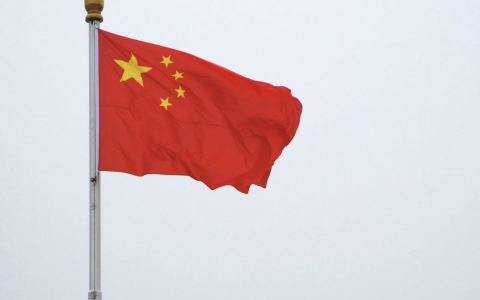
This week we all witnessed the signing of the Phase One China trade deal. It was super mega colossally great. Even if Phase Two never happens—and it’s already looking a bit boring, with no promises of China putting money to work here—then Phase One is good enough.
That’s how great it is, according to nearly everyone in the room with President Trump and China’s vice premier, Liu He, on Wednesday. Even some China bears like Michael Pillsbury from the Hudson Institute have come around. He likes the deal, too.
“What you are seeing in the signing today with China and with the USMCA is the beginning of the end of the managed decline of the United States,” said Steve Bannon, former Trump advisor, speaking on CBNC Wednesday. “This is a huge win for the U.S., and it’s why you don’t see Xi Jinping over here signing it and no one in the Chinese media writing about it. Trump has changed the center of gravity from the way the elites have to think of China.”
If Bannon is wrong, and this is just a deal approved by a handful of Wall Street big shots and multinationals who do not shed tears for manufacturing job losses, then he will never be able to save face on this one.
Kyle Bass was on the same CNBC segment with Bannon. Bass spends most of his Twitter time bashing China, mainly for Hong Kong, but not only. He considers China a strategic danger to the U.S. economy.
He called it a “temporary truce”, which is saying a lot for Bass because if anyone would call it a piece of junk, it would be Bass.
“China is giving up some pretty good concessions and Trump keeps the tariffs. It’s a really simple deal. China is short on energy and food, and they are going to buy it from us,” Bass says.
At one point not too long ago, China was already buying food and energy from us. Then the trade war happened. China stopped buying food and energy from us. Now they are back.
Maybe not much more than what they used to buy in the first place.
“We are encouraged by the deal, but there will be some difficulties to meet those expectations,” thinks Emily Weis, macro strategist for State Street in Boston. “Agriculture purchase targets will be tough to meet,” she says. “Looks like a shift of trade flow and that could lend itself to problems with the World Trade Organization members.”
Members cannot offer other members special treatment on goods and services without offering it to others.
The WTO has weakened over the years. Its dispute settlement mechanisms take years, and most companies find it useless in fighting antidumping practices.
Under Trump, the WTO is an afterthought. What the WTO and its members think is probably not top of mind in Beijing either.
If China does manage to fulfill its promise to increase its purchases of U.S. agricultural commodities, led by soy, chicken and pork, then what happens when that two-year time frame is up?
“Once the two-year time frame is up, what happens to U.S. farmers who have since ramped up domestic production on expectations of Chinese demand?” asks Nick Marro, an analyst at The Economist Intelligence Unit. “At face value, it’s not encouraging as a sustainable trade framework.”
Trade War Impacts On China
This week’s deal largely met the market’s low expectations. The U.S. stock market rose to new heights and is on the cusp of hitting 30,000 by the end of the first quarter. China stocks are up again on Friday, as measured by the XTrackers China CSI-300 A-shares (ASHR) exchange-traded fund this morning.
In summary, China has committed to a substantial increase of U.S. goods. The agreement addresses some important long-standing criticisms of China’s policies on intellectual property protections and technology transfers. It also eliminates trade barriers in agriculture (good for poultry, mainly) and gives U.S. firms more access to the financial services sector in China (already happening for big investment banks, but Visa and Mastercard would also like in).
China also committed to increased “transparency” with respect to its foreign exchange operations and to avoid currency manipulation. Finally, the agreement establishes a formal process of consultation to address disputes over implementation. These elements were all expected, based on previously released information.
To get this deal done, tariff increases that were scheduled to become effective in December were killed, and the tariffs that were imposed in September are now expected to be reduced, thereby reducing the average tariff rate on China from 21% to 19.3%.
The increase of U.S. tariffs saw China’s export growth fall to just 0.5% growth year over year in 2019 from 9.9% in 2018, according to Nomura. U.S.-bound exports fell by 12.5% in 2019 from 11.3% in 2018. Also, growth of processing & assembly imports dropped by 11.2% in 2019 from 8.5% in 2018.
Because of China’s key role in the global supply chain, this drop in processing import growth suggests China’s export growth will drop further. As exports in value-added terms account for 13% of China’s GDP, Nomura estimates that the slowdown in export growth reduced China’s year-over-year GDP growth by 1.2 percentage points in 2019.
“Some market participants are looking at whether a Phase Two trade deal is possible in the near term, especially before the November 2020 election,” says Ting Lu, a Nomura economist in Hong Kong. He doubts that will happen. “U.S.-China relations appear likely to worsen in coming years, regardless of who is elected president. The decoupling of the two countries may have just begun.”
This article originally appeared on Forbes.



